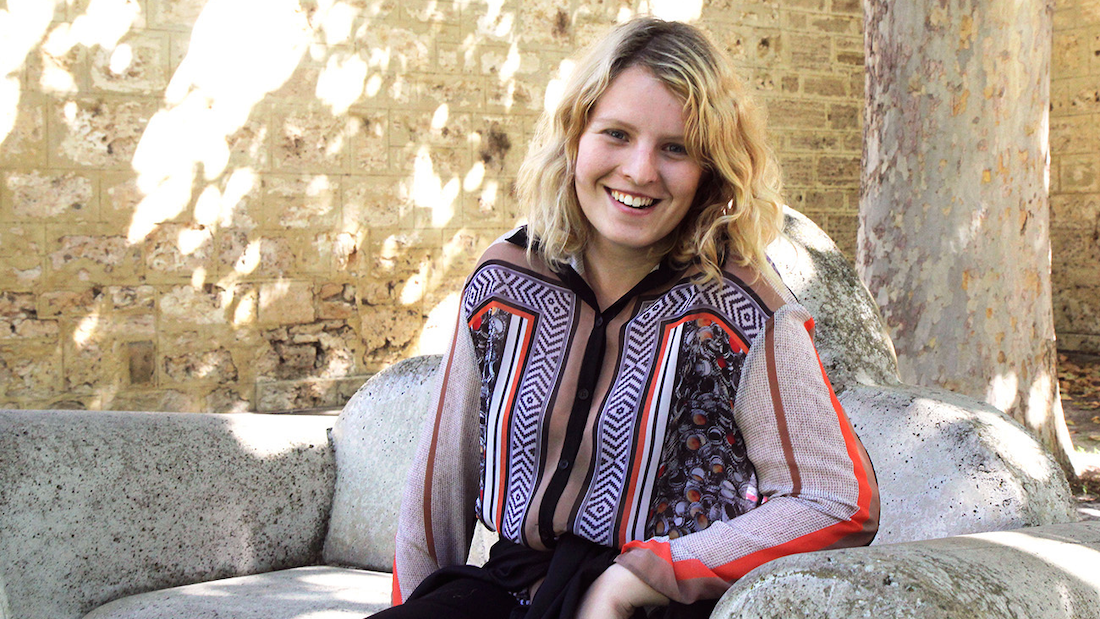
Emma Buswell’s stitch in time
Emma Buswell is a Perth artist, curator and writer fascinated with systems of government, economies and culture, particularly in relation to constructs of place, identity and community. Her current work, showing at John Curtin Gallery as part of the Indian Ocean Craft Triennial 2024, takes its inspiration from the matrilineal handcraft and knitting techniques passed down from her grandmother and mother, as well as a contemplative investigation into the nature of kitsch, ephemera and national identities. BRAYDEN EDWARDS caught up with Emma Buswell to find out how she weaved so many ideas into one piece.
Congratulations on being part of the 2024 Indian Ocean Craft Triennial. How did you come to be part of the exhibition?
IOTA runs on an expression-of-interest model. I was invited by Lia McKnight to submit a proposal that was considered by the IOTA team. I’m really excited that my proposal was accepted.
Your work is inspired by the matrilineal handcraft and knitting techniques that were passed down through generations. How far does this tradition go back, and what has been its importance in your work?
I’m not really sure how far it has gone back, to be honest, but I do have memories of both my mother and grandmother being incredibly creative. My great-grandmother was also creative and worked for a time as a film colourist. Letters we’d receive from my great-grandfather were also often annotated with little pictures at the end or in the middle of the text to describe activities he’d tell us about. Creativity, craft and artistry were part of the everyday activities of life, softening the edges rather than being a vocation. Arts and craft have always come really naturally to me, and I’ve often liked to think about the ones that come before me in my family also having these skills.
Some of the inspirations for this piece date back millennia. How do the age-old stories of Narcissus and Echo underpin the meaning of the
I’m fascinated by stories and how we share them. When I was researching the mythology of these figures, I was struck by their resonance with issues we’re still confronted with today: vanity, the voiceless, inaction…
What current social and political phenomena do you make these connections with?
The relationship between the central images in this myth seemed to me like an analogy to our contemporary political moment, an echo chamber. So much of the debate surrounding the arena of politics seems bent on asking if the motivations of our leaders are self-interested, ‘playing’ at politics motivated by re-election goals, or if they actually serve to represent the views of their electorate.
Much of western democracy has been built on and added to by earlier forms of ancient Greek and Roman governments. These mythologies communicate many of the values and moral codes that were held up at that time, several millennia ago. With these works, recalling these ancient stories and conflating them with rhetoric from the now, I’m asking if fundamental progress has really been made. Who has power and voice, and who bears witness?
What was the most challenging and rewarding part of being part of IOTA24?
I remember from previous IOTA exhibitions the scale and intricacy of many of the works displayed. For this exhibition, I wanted to set myself the challenge of thinking about how to contain big ideas and questions within each stitch of a large fabric. These are some of the largest works I’ve completed to date and have been fundamentally a massive labour of love and time. The way that I work means that I ultimately won’t know how a work will look until the final moment of stitching each panel together. I think that has been the biggest challenge: working for months and thousands of hours without knowing at the end whether I will like the outcome.
I’m incredibly excited to meet and share what I do with the other artists and to learn about their work. It’s been such an incredible opportunity to be selected and exhibited alongside such an international cohort.
